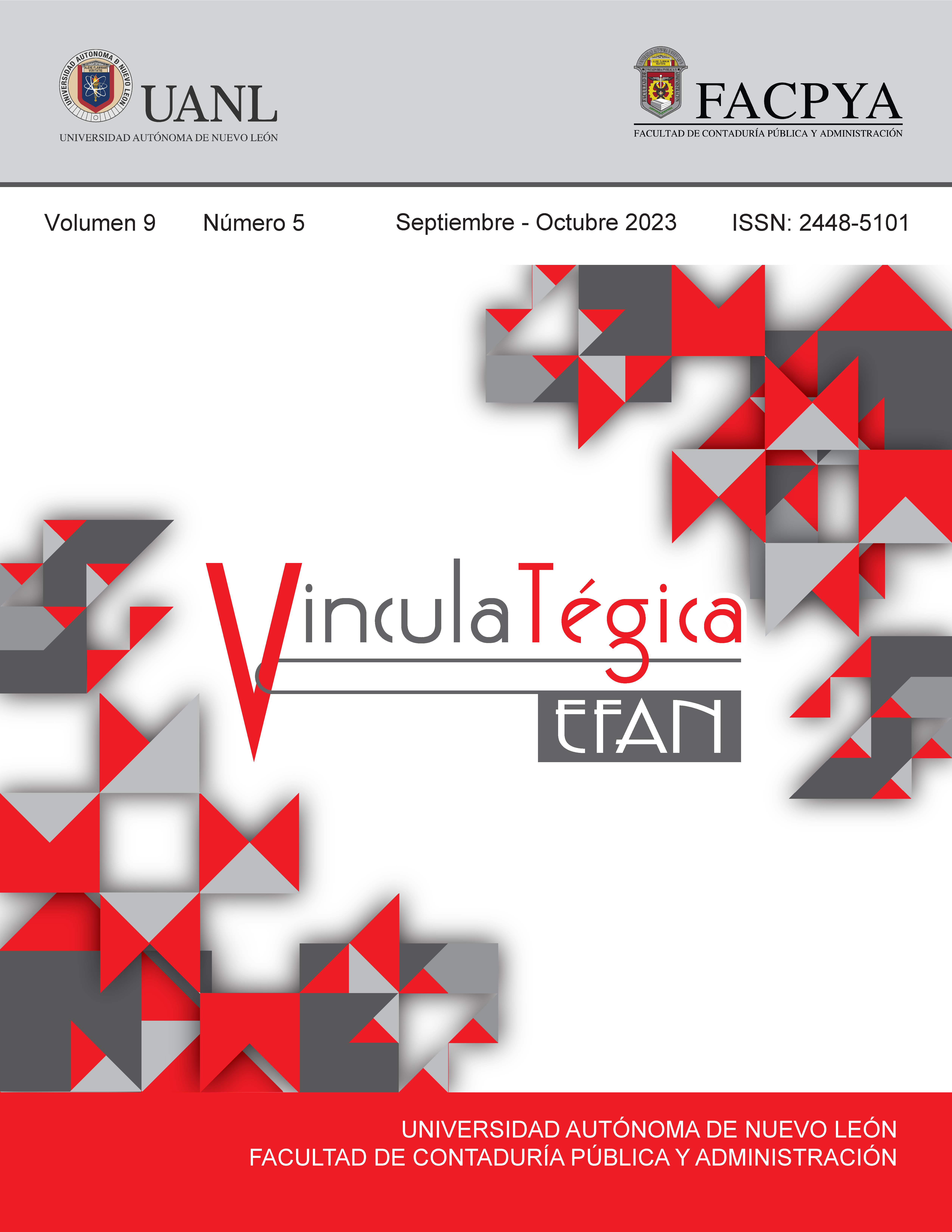Resiliencia y planeación municipal del agua potable 2020 (Nuevo León)
DOI:
https://doi.org/10.29105/vtga9.5-419Keywords:
Resiliencia, Planeación, SustentabilidadAbstract
El presente documento tiene como objetivo analizar la vinculación entre los planes y programas municipales con el uso sustentable y resiliente del agua, a través de indicadores hídricos, sociales, económicos y ambientales, como lo señala la Ley de Aguas Nacionales, con el objetivo de enfrentar perturbaciones y mantener la operatividad de los sistemas municipales. El documento identifica un déficit en la recarga total de los 23 acuíferos presenten en el Estado de Nuevo León, con base en información del Instituto Nacional de Estadística y Geografía se identificó que solo 15 municipios de 51 cuentan con un programa sustentable de manejo del agua, el cual no presenta una vinculación evidente con los componentes sociales, económicos y ambientales. Asimismo, se observa la necesidad de contar con planes y programas regionales de manejo de agua debido a la distribución de los acuíferos, los cuales pueden abarcar hasta 15 municipios, por lo que es necesario la gestión conjunta de planes.
Downloads
References
Acselrad, H. (1999). Sustentabilidad y ciudad. EURE (Santiago), 25(74), 36–46. https://doi.org/10.4067/S0250-71611999007400003 DOI: https://doi.org/10.4067/S0250-71611999007400003
CONAGUA 2020, Aguas subterráneas y acuíferos Nuevo León, recuperado de: https://sigagis.conagua.gob.mx/gas1/sections/Edos/nleon/nleon.html
CONEVAL. (2020). Informe de pobreza Nuevo León 2020. https://www.coneval.org.mx/quienessomos/InvestigadoresAcademicos/Paginas/Investigadores-
Consejo Consultivo del Agua. (n.d.). Diagnósticos del agua. Recuperado de: https://www.aguas.org.mx/
INEGI, Censos Económicos 2019, recuperado de: https://www.inegi.org.mx/programas/ce/2019/
INEGI, 2021, Censo Nacional de gobiernos municipales, recuperado de: https://www.inegi.org.mx/programas/cngmd/2021/
LEY DE AGUAS NACIONALES.
Esparza, M. (2013). La sequía y la escasez de agua en México_ Situación actual y perspectivas futuras. Secuencia. DOI: https://doi.org/10.18234/secuencia.v0i89.1231
Friedmann, J. (2008). The uses of planning theory: A bibliographic essay. Journal of Planning Education and Research, 28(2), 247–257. https://doi.org/10.1177/0739456X08325220 DOI: https://doi.org/10.1177/0739456X08325220
Holling, C. S. (1973). RESILIENCE AND STABILITY + 4050 OF ECOLOGICAL SYSTEMS. In Source: Annual Review of Ecology and Systematics (Vol. 4). DOI: https://doi.org/10.1146/annurev.es.04.110173.000245
Leigh, N. G., & Lee, H. (2019). Sustainable and resilient urban water systems: The role of decentralization and planning. In Sustainability (Switzerland) (Vol. 11, Issue 3). MDPI. https://doi.org/10.3390/su11030918 DOI: https://doi.org/10.3390/su11030918
Monroy, O. (2013). Manejo sustentable del agua en México. Revista Digital Universitaria, 14(10). https://www.revista.unam.mx/ojs/index.php/rdu/article/view/236
Ortega-Gaucin, D. (2013). CIENCIA Y SOCIEDAD. www.a7.com.mx
Pickett, S. T. A., Cadenasso, M. L., & Grove, J. M. (2004). Resilient cities: Meaning, models, and metaphor for integrating the ecological, socio-economic, and planning realms. Landscape and Urban Planning, 69(4), 369–384. https://doi.org/10.1016/j.landurbplan.2003.10.035 DOI: https://doi.org/10.1016/j.landurbplan.2003.10.035
Pizzo, B. (2015). Problematizing resilience: Implications for planning theory and practice. Cities, 43, 133–140. https://doi.org/10.1016/j.cities.2014.11.015 DOI: https://doi.org/10.1016/j.cities.2014.11.015
Sisto, N. P. (2010). Manejo sustentable del uso de agua y crecimiento urbano (Issue 1). DOI: https://doi.org/10.29105/ensayos29.1-2
Downloads
Published
How to Cite
Issue
Section
License
Copyright (c) 2023 Rolando de Luna Dávila

This work is licensed under a Creative Commons Attribution 4.0 International License.
a). Authors keep copyright and give the journal the right of the first publication of the work under a Creative Commons attribution license. This license allows others to share the work as long as original authorship and initial publication in this journal is acknowledged.
b). Authors may make other independent and additional contractual agreements for the non-exclusive distribution of the version of the article published in this journal (e.g., include it in an institutional repository or publish it in a book) as long as they clearly indicate that the work was published for the first time in this journal.







